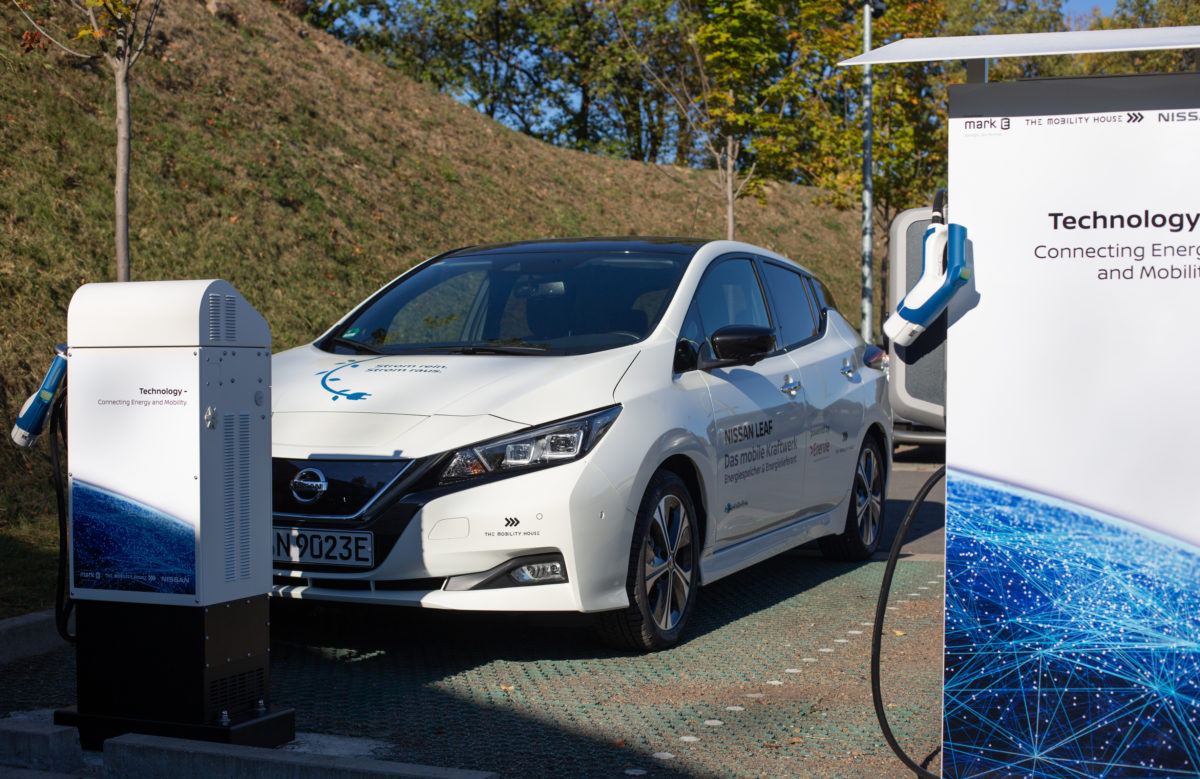That electric vehicles consume power from the public grids is well known. That they are also feeding power back into the grid is something new in Germany. Munich-based company the Mobility House, the car manufacturer Nissan and utility Enervie have demonstrated for the first time the use of EV’s to provide frequency control to a wider grid. The vehicle was aggregated into a larger battery storage portfolio owned by Enervie. The vehicle's 40-kWh battery essentially works as a power station.
The technology was presented in a live demonstration at Enervie's headquarters in Hagen, Germany.
Additional revenues incentivize intelligence
With this, the project partners have brought the vision of EVs has an integral part of a smart grid closer to reality. Enervie Executive Erik Höhne explained the use of this new approach from the perspective of a distribution system operator (DSO): “Considerable demand would be created if, for example, everybody wanted to charge their EV at 7 pm after work. The expensive and not so ‘smart' solution to this would bolster the grids by expanding their capacity through infrastructure works. Alternatively, grid operators could retain control over when an EV is charged. To do so, a remuneration scheme through the retail of frequency control would incentivize EV owners to cede control over when their vehicle is charged.
Available from next year
Speaking at the event, Guillaume Pelletreau, CEO at Nissan Center Europe, highlighted that “e-mobility is more than the retail of vehicles.” Reportedly, Nissan has already sold more than 370,000 EVs’.
Furthermore, Nissan has supplied 148 second-life Nissan Leaf batteries to the Amsterdam Arena, for the installation of a stationary storage system. The 3 MW battery works not only as a backup power system for the arena but also delivers ancillary services to the grid. The technology presented on Tuesday will be available for the Germany market in the coming year. Presumably, at this stage, a range of pilot projects with key accounts would be realized. Through this, individual revenue concepts could be developed.
Support for distribution grids
Andreas Walczuch of Amprion provided further perspective of DSOs in his assessment. In continental Europe, around 3,000 MW of frequency control energy is available, with 600 MW in Germany. The German market for frequency control has undergone significant changes over the last years. In 2014, grid-connected battery storage for the supply of frequency control was non-existent. Thanks to high investments 200 MW of grid-connected storage with permission to supply frequency control has been added between 2015 and 2018. “This service can also be provided by EVs,” says Walczuch. Looking at the projected market development of EVs, a compelling use case for operating reserve could also result.
Stop discrimination against storage
Andreas Rimkus, member of the parliament for the German social democrats (SPD) spoke of “a roaring success for sector coupling,” as many vehicles would be left unused 23h a day. EVs could provide additional services to the power grid during this time. Moreover, he criticized the regulation of battery storage, by which the renewable energy surcharge has to be paid while charging and discharging. He said that he would work to end this regulation. Different requirements are needed, depending on whether storage is used as a grid service booster, short- or long-term storage.
Intelligence needs data
Bernhard Schaefer, Chief Executive at BDEW, regional chapter NRW e-mobility, pointed at the ultimate goal of meeting carbon targets and replacing fossil fuels. To this end, customers must be convinced on a system level. If EVs are supposed to support the energy system, data from EVs and charging points will have to be processed. “For this, we will have to work to convince,” he says. “But without the data, it won’t work” Markus Emmert of the German association E-Mobilität, agrees partially. His association has been working for a while to get EV manufacturers to share their data. This, however, is rather complex and it needs to be clarified, what type of data would be needed and who legally owns the data. With the next step toward autonomous driving, the latest, this data sharing would be inevitable.
This content is protected by copyright and may not be reused. If you want to cooperate with us and would like to reuse some of our content, please contact: editors@pv-magazine.com.



1 comment
By submitting this form you agree to pv magazine using your data for the purposes of publishing your comment.
Your personal data will only be disclosed or otherwise transmitted to third parties for the purposes of spam filtering or if this is necessary for technical maintenance of the website. Any other transfer to third parties will not take place unless this is justified on the basis of applicable data protection regulations or if pv magazine is legally obliged to do so.
You may revoke this consent at any time with effect for the future, in which case your personal data will be deleted immediately. Otherwise, your data will be deleted if pv magazine has processed your request or the purpose of data storage is fulfilled.
Further information on data privacy can be found in our Data Protection Policy.